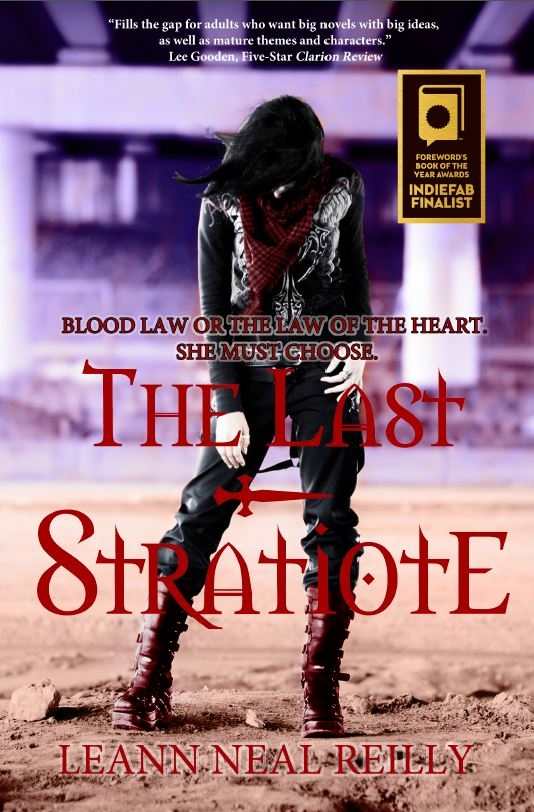
The Last Stratiote
- 2013 INDIES Winner
- Bronze, Fantasy (Adult Fiction)
James Goodman, ICE agent, becomes entwined in a supernatural world that follows primal laws of blood debt.
Many current horror and hyper-fantasy novels are published for the young adult audience. The Last Stratiote fills the gap for adults who want big novels with big ideas, as well as mature themes and characters.
Homeland Security ICE agent James Goodman pursues Albanian human traffickers that abduct the woman he loves. As he is about to capture them, they’re viciously and methodically killed by a predatory female with lethal preternatural fighting skills. Becoming what appears to be mortally wounded, the woman still kills the last kidnapper. LeAnn Neal Reilly, also the author of the novels The Mermaid’s Pendant and Saint Sebastian’s Head, writes, “With the last of her strength, she gripped his neck and looked into his heartless black eyes … Then she bit down on his carotid with all her furious soul.”
James uses his own blood to give the woman an emergency blood transfusion. Imagine his surprise when she makes an appearance at his apartment the same night she was injured. He learns her name is Elira Dukajini. She is a Stratiote, an ancient Albanian warrior who seeks vengeance that can only be satiated by blood. Elira’s irresistible force is like a black hole that sucks James into her primal and violent core.
The Last Stratiote contains the relentless pace of James Patterson’s novels; the political intrigue and pragmatic characters found in Daniel Silva’s and Jeffery Archer’s books; and the historicity, philosophy, and theology of Anne Rice’s work. The novel is a reinvention of the vampire mythos, bringing new blood to the tired trope. It is infused with intensity and intelligence that does not emphasize vampirism.
The vampires and mythical creatures in Rice’s books and Stephanie Myers’s Twilight series long for their humanity and glisten in the sunlight. The vampire aspects of Reilly’s novel are understated, making it more horrific. For example, the following excerpt describes an action that is terrifying because it is unexpected and almost banal: “A grin widened his features as he placed his palms flat on the sidewalk and lowered his head to lap the blood.” The brevity and simplicity of the passage strike a chord of fear as it illustrates that drinking blood for this character is an ordinary, everyday thing. He isn’t a count in an opera cape or a handsome young man brooding over his inability to love. Evil is given a face in the novel, and the monsters are real and familiar on its pages.
This reality is not limited to the novel’s villains. There are no black-and-white lines of moral division; all of the characters in The Last Stratiote exist in ambiguous shades of gray. Each character possesses an item or object that defines his or her essence. This is brilliantly illustrated by the protagonist Elira. She lives by her knife but carries what she calls her “relic,” a former lover’s finger inside a cloth bag tied around her neck. This idiosyncrasy, among others—such as her drug addiction, her propensity to compose what she calls blood Haiku, and her appreciation for the works of Shakespeare—functions like a pair of 3D glasses that make the story come to life.
The result is a novel that conveys sensuality and eroticism that stimulate the libido and the mind. Other works in this genre stick to the same formula of sex and youth. The Last Stratiote excels on so many levels. Reilly must write a sequel.
Reviewed by
Lee Gooden
Disclosure: This article is not an endorsement, but a review. The publisher of this book provided free copies of the book and paid a small fee to have their book reviewed by a professional reviewer. Foreword Reviews and Clarion Reviews make no guarantee that the publisher will receive a positive review. Foreword Magazine, Inc. is disclosing this in accordance with the Federal Trade Commission’s 16 CFR, Part 255.
